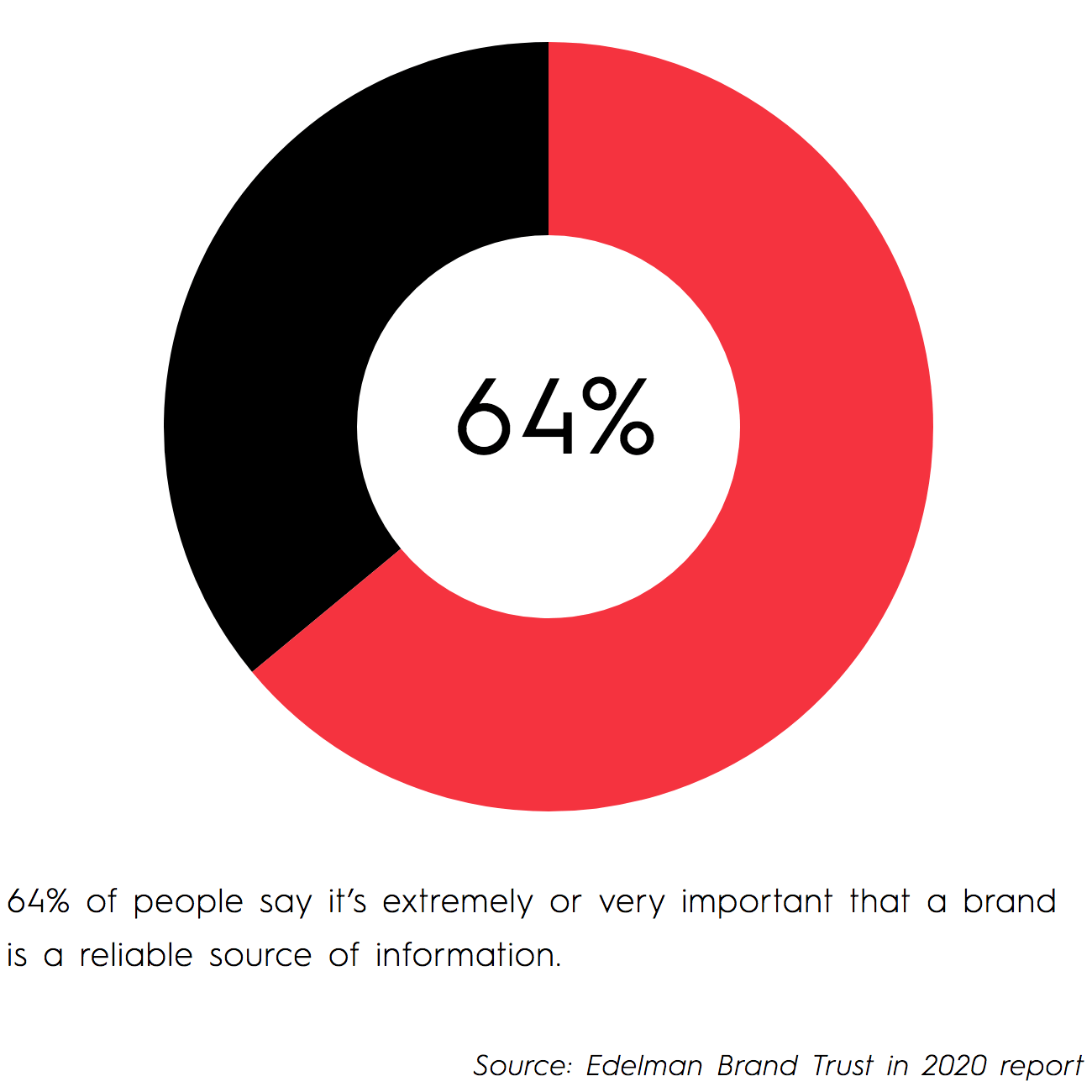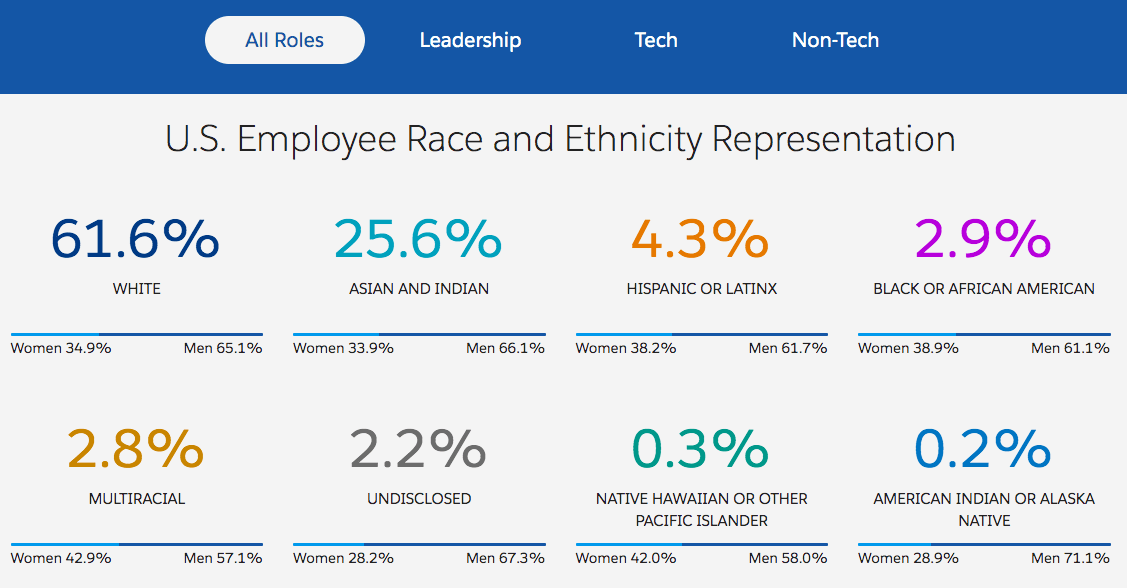According to the Edelman Brand Trust in 2020 report, the first reason people will buy something is price. The second? Trust. At a time when people are struggling to trust media, politicians, and more, trust has become a rare commodity. And for your brand, it is the most valuable thing you can cultivate with people. But how do you do that? By being a consistent, reliable presence in every way: through your product, your customer service, and—for marketers—through your content. The more you can tell strong, well-crafted stories, the more people will see you as a trusted resource. And while you can do this through all types of content, there is one especially powerful way to do it: data storytelling.

Trust & Data Storytelling
There has never been a more crucial time for brands to cultivate trust. These days, brands face more competition, more challenges, and more serious consequences for making mistakes than ever before. One of the few things that can safeguard your brand is the strong relationships you build with people. These bonds are what will make people more likely to support you, both personally and with their pocketbooks, in the near and long term.
According to Edelman, 75% of people with high trust in a brand will…
- Buy the brand even if it is not the cheapest.
- Buy only that brand’s product.
- Be very interested in buying or trying any of the brand’s new products.
78% of people with high trust in a brand will…
- Be likely to share or repost content about the brand (or their experiences with the brand).
- Recommend the brand to other people if asked.
- Defend the brand if they hear someone criticizing it.
Of course, to get people’s trust your brand has to earn it—and that’s a lot harder to do these days.
Across all industries, people have higher expectations of brands, and they are especially concerned with the way your brand thinks and acts. Everything about your brand—from the way you produce your product to the way you treat your employees—can affect their trust in you. Luckily, data storytelling is uniquely suited to help you connect with people and create content that fosters their trust.
Why? Because a strong data set reveals truths in cold, hard numbers. Dig into data and you uncover stories in the form of trends, correlations, outliers, and more. These stories may provide a big-picture view or hone in on a specific subject, but the insights extracted can influence behavior, expand knowledge, and shift people’s perspectives in powerful ways. By crafting a strong narrative anchored by solid data, you are creating factual content of substance—exactly the type of content that people are desperate for.
Don’t let your data go to waste! Download The Content Marketers’ Guide to Data Storytelling to find out how to partner with data analysts, find interesting stories, and turn them into compelling content.
3 Ways to Use Data Storytelling to Cultivate Trust
Whether you produce a simple infographic for social media, a large interactive on your site, or an in-depth article for a trade publication, data storytelling can answer questions, reinforce your expertise, or provide unique insight into your brand. If you’re not sure what data storytelling looks like (beyond your annual report), here are three ways you can use it to strengthen your relationship with your audience and cultivate the trust you need.
1) Be a reliable source of information.
There has never been a more confusing, more incendiary time in the media than this moment. Fake news, pundits, think pieces, op eds, blogs, Twitter feeds, and a trillion other platforms are disseminating plenty of information, yet opinion is reigning supreme over facts. Many of us have become disillusioned, retreating to our corners and shaking our heads. As we’re facing this credibility crisis, we need data stories that provide concrete evidence we can trust.
When you create content grounded in good data (not just tell them what you think about a subject), they will be far more likely to listen to you. When you are trying to deliver a certain message or takeaway, a story backed up by concrete evidence is much easier to trust.

These stories are also helpful to establish your own expertise. Know that you have a larger audience than you realize. Beyond customers or fans, you have colleagues, competitors, potential employees, industry contacts, and many more paying attention to the content you create. The more you demonstrate your interest and expertise, the more it will help your reputation in larger spheres.
Example: Dropbox used their own data to create The State of Collaboration 2019. Based on a survey of 2,500 global business decision makers, the report dives into what business collaboration needs are, the barriers to successful collaboration, and the solutions to a broken workplace. This type of data storytelling shows that Dropbox intimately understands their customers’ problems and can be trusted to create a product that makes their lives easier.

2) Be honest.
There is plenty of data in the world, but your company’s own internal data is an especially powerful source of data stories. When you peel back the curtain and share your company data, you give people valuable insight into your brand. This simple act of transparency also demonstrates that you are vulnerable and willing to let them into your world. This is a great gesture of mutual trust.
There are all sorts of ways to tell interesting, unique, and valuable data stories about what happens behind the scenes of your company. For example, if sustainable manufacturing is a core part of your brand, use data to showcase what that looks like (e.g., how much your product reduces the amount of plastic that goes into landfills each year).
Think of other interesting data points: What is your average customer service rating? How many users do you have? What data do you have around successful initiatives? These can all become interesting stories.
Note: Beyond your external audience, this type of data storytelling also cultivates trust within your own organization. When you provide transparency and clarity, your own employees are much more likely to trust you and be engaged.
Example: Salesforce is on a mission to establish a 50% U.S. workforce made up of underrepresented groups by 2023. They share an impressive amount of data about their company’s efforts in both their 2019 Equality Data report and their 2020 Salesforce Equal Pay Update, which details how they have spent $12.4 million in salary adjustments to ensure equal pay. This level of transparency proves that they are committed to being accountable, fostering brand trust both inside and outside of the company.

3) Showcase your values.
People care about what a company believes as much as they care about the products or services they provide. Data storytelling is a great way to take people behind the curtain and show them who you really are in a more concrete way. Again, if you can use data to show (not just tell) people what you care about, people will be much more likely to support your brand.
Think about the things you do that reflect your culture and values. How many volunteer hours has your team spent this year? How many pounds of clothing did you donate for your clothing drive? For more inspiration, here are 10 ways other brands put their values front and center.
Example: Knowing how important hydration is to health, water bottle company S’well donated $1 million worth of water bottles to health care workers on the front lines of the pandemic crisis. In addition to sharing photos of the workers they helped, they also shared data points that reinforced the campaign’s success, including the impressive fact that they displaced 4.8 million single-use water bottles.
How to Dive Into Data Stories
Telling great data stories just takes a little practice. If you don’t know where to start or you need a little refresher, here are a few things that might help.
- Source your data. Explore solid, reputable data sources for story ideas. Here are 100+ external sources to start, as well as 9 sources of internal data. You can also check out our free e-book The Content Marketers’ Guide to Data Storytelling to learn how to make friends with your data analysts.
- Find the story. Here’s how to dig into your data and extract the most relevant insights.
- Build a narrative. Start with these tips to tell a strong data story.
- Design your data. Choose the right data visualization format for your story, and see our guide to design the most common charts and graphs for maximum comprehension.
And if your data is a little too intimidating to dive into, let an expert take a look. Here’s how to find the right data visualization agency, or hit us up. We’re always up for a storytelling challenge.




